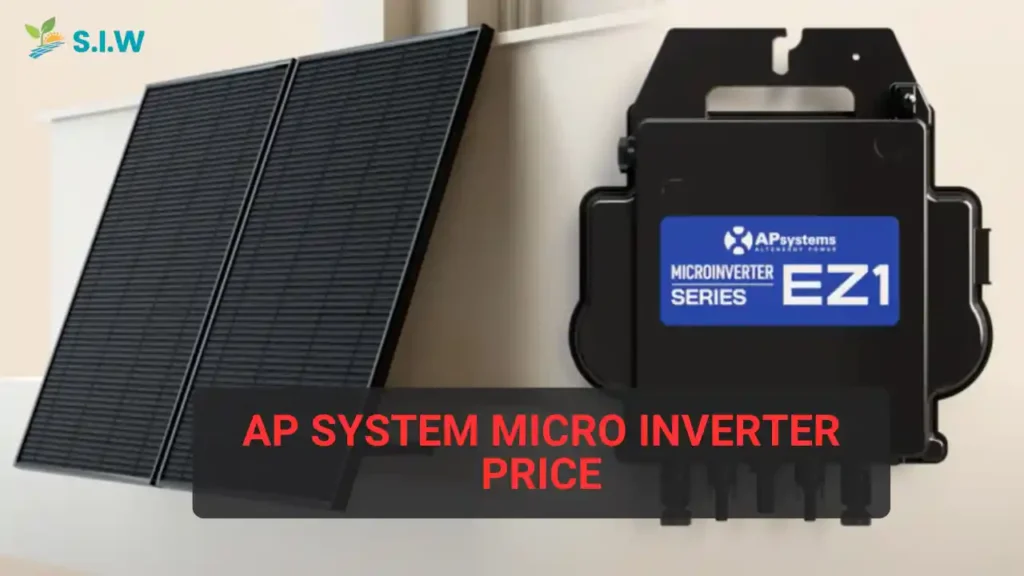When it comes to maximizing the efficiency of your solar energy system, choosing the right micro inverter is crucial. AP Systems, a renowned brand in the solar energy industry, offers a wide range of micro inverters designed for both residential and commercial solar installations. Understanding the AP System micro inverter price involves taking a closer look at various factors, including the models, features, and overall benefits these micro inverters provide. In this detailed guide, we will explore everything you need to know about AP System micro inverters, their pricing, and how to make an informed purchasing decision.
What is a Micro Inverter?
Before diving into the pricing specifics, it’s essential to understand what a micro inverter is and how it differs from traditional inverters. A micro inverter is a small, compact device installed at the back of each solar panel. Its primary function is to convert the direct current (DC) produced by the panel into alternating current (AC), which can be used by household appliances or fed back into the grid. This is different from a string inverter, where one central inverter is used for the entire solar array.
The major advantage of micro inverters, such as those offered by AP Systems, is their ability to optimize each panel’s performance individually. This makes them especially useful in scenarios where panels may be shaded or oriented differently.
AP Systems Micro Inverter Models and Features
AP Systems provides a range of micro inverters suited for various needs, including residential, commercial, and industrial solar installations. Some of their popular models include:
AP Systems QS1 Micro Inverter
The QS1 micro inverter is one of the most efficient options for residential solar systems. It can handle up to four PV modules and features a 4-to-1 design, which reduces installation time and simplifies wiring.
Key features include:
- Max output power: 1200W
- Peak efficiency: 96.5%
- Monitoring via ECU-R: Real-time performance monitoring
- Independent MPPT for each panel, ensuring optimal output even if one panel is shaded or obstructed.
AP Systems YC600 Micro Inverter
This is another widely used model for smaller residential projects. It can handle two panels and offers a more affordable option without compromising on quality.
Key features include:
- Max output power: 600W
- Peak efficiency: 95.5%
- Dual-module input: Connects two panels per unit
- Monitoring: Includes comprehensive energy data access
AP Systems YC1000 Micro Inverter
Designed for commercial solar installations, the YC1000 offers high-capacity solutions to larger solar arrays, making it a favorite for commercial projects. This micro inverter can handle up to four modules with three-phase output, which is ideal for commercial grid configurations.
Key features include:
- Max output power: 1000W
- Peak efficiency: 95.5%
- Three-phase output for enhanced commercial compatibility
- NEMA 6 enclosure for better weather resistance
Factors Influencing AP System Micro Inverter Prices
The price of AP System micro inverters can vary depending on several factors, including:
1. Model and Capacity
Each AP System micro inverter model comes with its own set of features, capabilities, and price points. For instance, residential models such as the YC600 are typically priced lower than commercial units like the YC1000. The price generally increases with the inverter’s power capacity and number of panels it can handle.
2. Efficiency and Performance
High-efficiency models such as the QS1 are priced higher due to their advanced features, including superior performance in optimizing energy output and real-time monitoring capabilities. Higher efficiency ratings often lead to better energy production over time, which can justify the upfront investment.
3. Installation Costs
While micro-inverters reduce the risk of a single point of failure (as is common with string inverters), they can increase installation costs. Each panel requires a micro inverter, and while these costs can add up, the enhanced system performance often offsets the higher installation expenses.
4. Warranty and Durability
The warranty provided by AP Systems, typically 10-25 years, reflects the durability and longevity of the product. Investing in a reliable, long-lasting inverter reduces the need for frequent replacements or repairs, and longer warranties may slightly increase the upfront cost but provide better value over time.
AP System Micro Inverter Price Overview
Pricing for AP Systems micro inverters varies depending on the model, system size, and the retailer or installer. Below is a general price range for some of the most popular models:
- AP Systems QS1 Micro Inverter: $250 – $300 per unit.
- AP Systems YC600 Micro Inverter: $140 – $180 per unit.
- AP Systems YC1000 Micro Inverter: $400 – $500 per unit.
These prices are for the inverters only and do not include installation or additional system components like mounting hardware or monitoring systems.
Is Investing in AP System Micro Inverters Worth It?
Choosing AP System micro inverters can be an excellent investment, especially for homeowners or businesses looking to maximize their solar panel performance. Micro inverters offer significant advantages, such as individual panel optimization, enhanced system reliability, and easier scalability for future solar expansions.
Additionally, by investing in a high-quality inverter from a trusted brand like AP Systems, you can ensure that your solar system operates at peak efficiency, helping you save more on electricity bills and increase your return on investment over time.
Conclusion
In conclusion, the AP System micro inverter price is a reflection of the advanced technology and benefits these devices provide. By offering superior performance, reliability, and scalability, AP Systems micro inverters are a smart choice for both residential and commercial solar installations. Whether you’re looking for a solution for a small rooftop setup or a large-scale solar farm, AP Systems offers a range of inverters to meet your needs.
Investing in high-quality micro inverters ensures that your solar energy system runs efficiently for years, providing excellent long-term value








